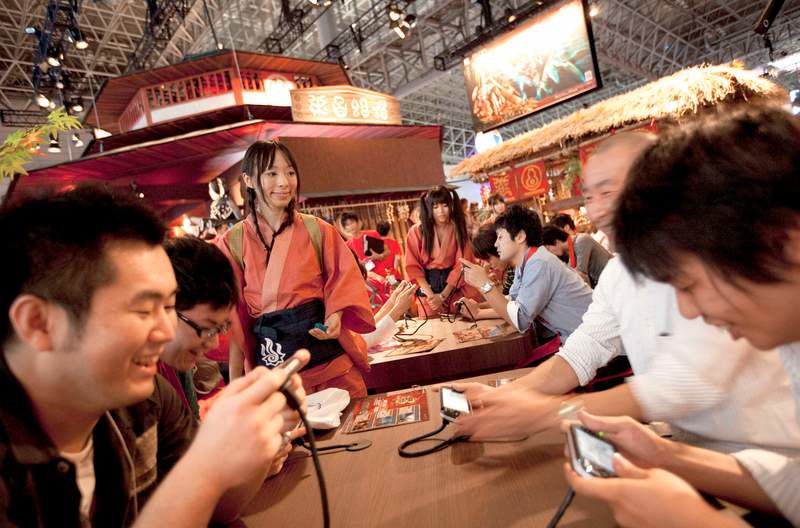Game designers look to the West
Published 5:00 am Monday, September 20, 2010

- Visitors to the 2010 Tokyo Games Show play a demo version of a new video game at Capcom's promotion booth last week. In the early days of the industry, Japan's innovative video games dominated the scene. But its recent games have failed to make much of a mark in the U.S. and Europe; now the blockbuster hits are coming from the West.
CHIBA, Japan — A supersonic hedgehog and a plumber named Mario may have been unlikely heroes, but they once dominated video games. Only the Japanese could make innovative games like those, developers here used to boast. The West just didn’t get it.
Warp ahead 20 years, and much of Japan’s game industry is in a rut. Sonic the Hedgehog and Mario still sell games. But more recent Japanese attempts to establish franchises, like Sony’s “White Knight Chronicles” or Capcom’s “Monster Hunter” have not made a mark in the U.S. and Europe. Instead, the blockbuster hits now come from the West: Activision Blizzards’ “Call of Duty,” for example, and Take-Two Interactive’s “Grand Theft Auto.”
Five years behind
That is why a growing group of Japanese game developers are asking a once-unthinkable question: Can they learn from the West to get back on top of the $60 billion global video game business?
“I look around Tokyo Games Show, and everyone’s making awful games; Japan is at least five years behind,” said Keiji Inafune, 45, head of global research and development at Capcom and one of Japan’s most legendary game designers. “Capcom is barely keeping up,” he said in an interview at the show, which ended Sunday. “I want to study how Westerners live, and make games that appeal to them.”
Last year, the world’s best-selling game by far was Activision’s “Call of Duty: Modern Warfare 2,” which sold 11.86 million copies in the U.S., Japan and Britain, according to NPD Group, a market research company.
Global sales numbers for the entire industry are hard to come by. But Japan’s share of the world’s video game market has fallen from estimates as high as 50 percent in 2002 to slightly more than 10 percent in 2009, based on figures from the Entertainment Software Association, the Japan External Trade Organization, and the research companies DFC Intelligence and Enterbrain.
The West’s dominance in the video game industry was evident at the Tokyo Game Show, which has lost much of its global clout in recent years. Despite excitement at the 2010 show over coming titles from Japanese publishers, like Level 5’s “Ni no Kuni” and Sony’s “The Last Guardian,” Japan’s game developers were mainly wringing their hands.
Nintendo still sells
Nintendo has been the major exception. Based in Kyoto, Nintendo reinvented the industry with its Wii home console and wandlike remote, which was introduced in 2006, luring new players while setting an industry standard in motion-control gaming.
The Wii’s “Wii Sports Resort” was the world’s second-biggest game in 2009, selling 7.57 million copies. Its soon-to-be-released Nintendo 3DS, a three-dimensional display portable console that does not require special glasses, is the industry’s most anticipated hardware release in years.
But because the best-selling games on Nintendo consoles are largely made by Nintendo, the rest of the Japanese game industry has been excluded.
Meanwhile, Japan’s domestic game market is shrinking, down by 20 percent since 2007, to 549 billion yen ($6.4 billion) in 2009, according to Enterbrain.
During that time, the video game market in the U.S. surged to a record $21.4 billion in 2008 before a recession-driven decline to $19.7 billion in 2009.
Linear vs. virtual games
As Japanese development studios struggle with declining sales, analysts say they are falling behind their American rivals in investment power. A budget for a blockbuster game in the U.S. can approach $50 million, a figure few Japanese developers can match.
“Japan used to define gaming,” said Jake Kazdal, a longtime developer who has worked at Sega in Tokyo and the American game publisher Electronic Arts. “But now many developers just do the same thing over and over again.”
Part of Japan’s problem, Kazdal said, is a growing gap in tastes between players in Japan and overseas. The most popular games in Japan are linear, with little leeway for players to wander off a defined path. In the U.S., he said, video games have become more open, virtual experiences.
“Smarter developers in Japan are trying to reach out to the West,” he said. “They’re collaborating and trying to make games that have more global appeal.”
Unveiling the game “Shadows of the Damned” at the Tokyo Game Show, Goichi Suda, chief executive of Grasshopper Manufacture, said the title was designed “to appeal to a global audience.” But the creative director of the game, Shinji Mikami, cited a culture clash between the Japanese design house and its partners at Electronic Arts.
“Japanese developers tend to work on inspiration, not so much on a set time schedule like the Americans,” Mikami said in an interview. “So when EA asked about the game month after month, we felt like loan sharks were coming after us.”
But there are no hard feelings, evidently. “We’re grateful to EA for being so understanding,” Mikami said.






